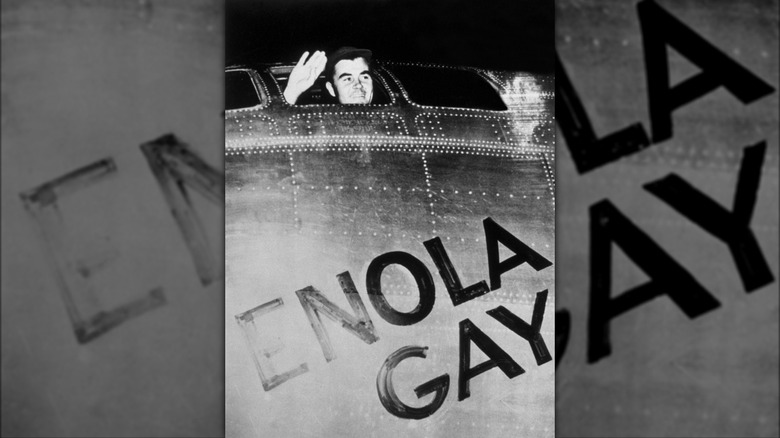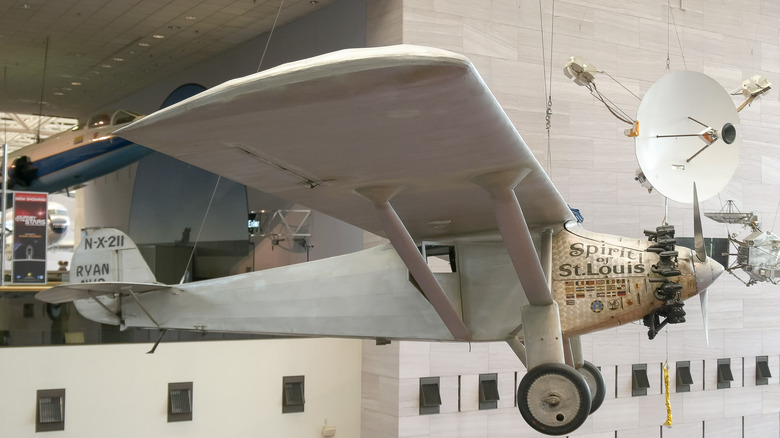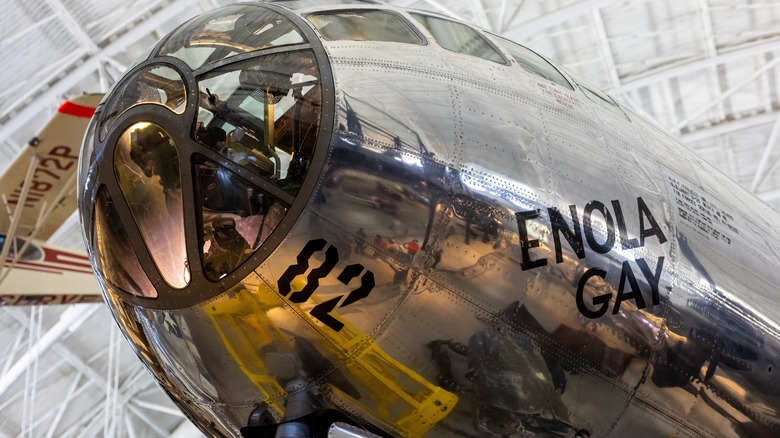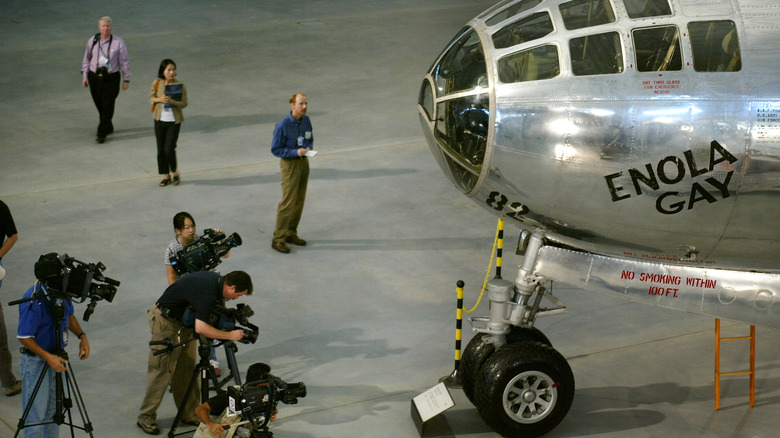The Real Meaning Behind The Name Enola Gay, The Plane That Dropped The First Atomic Bomb
If you've ever flown with Frontier Airlines, you may have noticed that the planes have unique animal decals and are named after the respective critters (via Frontier). This is a fairly uncommon practice for airplanes, which are usually mass-produced (via Simple Flying). However, several plane names of the World War II-era are known exclusively by their name, including the infamous Enola Gay, a B-29 bomber that was used to drop an atomic bomb on Hiroshima, Japan (via Britannica).
Many boats are theoretically associated with feminine names to signify protection (via Imperial War Museum). Yet the Enola Gay, another inanimate object, had a dark intention — the device was scheduled to drop an atomic bomb on an enemy target. At 2:45 a.m. on August 6, 1945, the B-29 Martin Company aircraft carried a uranium bomb with hopes of getting the Japanese to surrender (via History Nebraska). So why was it named, and who was it named after?
Aviators and their aircraft names
In the 1930s and '40s, planes and pilots were generating a lot of media interest — think of Amelia Earhart and Charles Lindbergh. Lindbergh, with his Spirit of Saint Louis, would be the first to achieve transatlantic flight. Another well-known plane was one that Howard Hughes designed and built — the Spruce Goose during WWII — which transported troops and materials across the Atlantic. It was made entirely out of wood since the government had restricted steel and aluminum use (via Evergreen Aviation and Space Museum).
It's important to note that during the war, not many planes which were mass-produced were given as much fanfare, so the Enola Gay stood out from the pack. Bockscar, for instance, came in second during WWII. This was the plane that dropped the bomb on Nagasaki and its name is nearly forgotten to history. It was named after its own pilot, Frederick Bock (via Los Alamos Science Museum).
Pilot Paul Tibbets names Enola Gay
According to the Atomic Heritage Foundation, Col. Paul Tibbets had basic flight training at Randolph Field in San Antonio, Texas in 1937 and rose quickly through the ranks of the Army Air Force, leading squadrons in France and North Africa. He was privy to the development of the Boeing Superfortress and was briefed on the Manhattan Project, the code name of the U.S. development of an atomic weapon. Tibbets helmed a team of about 1,800 men and trained for eight months between 1944-45 to prepare to drop the bomb from the plane.
Awaiting for final orders, Tibbets was stationed at Tinian Island in the South Pacific from May through August of 1945. On August 5, 1945, the 29-year-old Tibbets formally named his B-29 "Enola Gay" after his mother (née Haggard). He had her name painted in black lettering on the front of the plane "for luck" and carried his lucky cigarette case and a box of 12 cyanide capsules in case the mission did not go as planned (via The Washington Post).
Tibbets survived, but the outcome was mass devastation.
The Enola Gay name lives on
In 1995, the National Air and Space Museum hosted a controversial exhibit of the Enola Gay to mark the 50th anniversary of the end of WWII. Only parts of the plane were on display, including two engines, propellers, and the bomb bay forward fuselage. According to The American Historical Association, veterans groups like the Air Force Association were displeased with the way in which the plane would be displayed — the lack of historical context was decried by experts and veterans alike. The fully reassembled Enola Gay is now on display permanent display at the National Air and Space Museum's Steven F. Udvar-Hazy Center in Virginia.
As for her namesake, not much is known besides the fact she was an Iowa native born in 1890. In addition to her son Paul, she had a daughter and a total of three grandchildren. She died in 1966 in Florida (via Find A Grave). Although her son was considered by many to be a mass murderer when he returned from the war, it is said Enola was just "happy to have her son back." If you notice, her name is "alone" spelled backwards, so it may not have been a very popular name to begin, with but nonetheless is not a popular one now (see Baby Name Uniqueness Analyzer).



